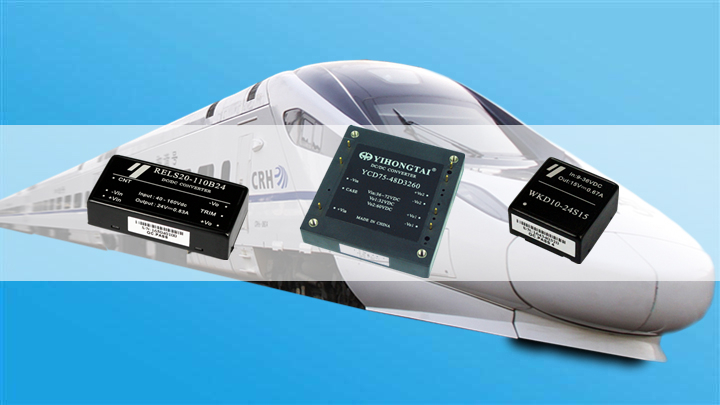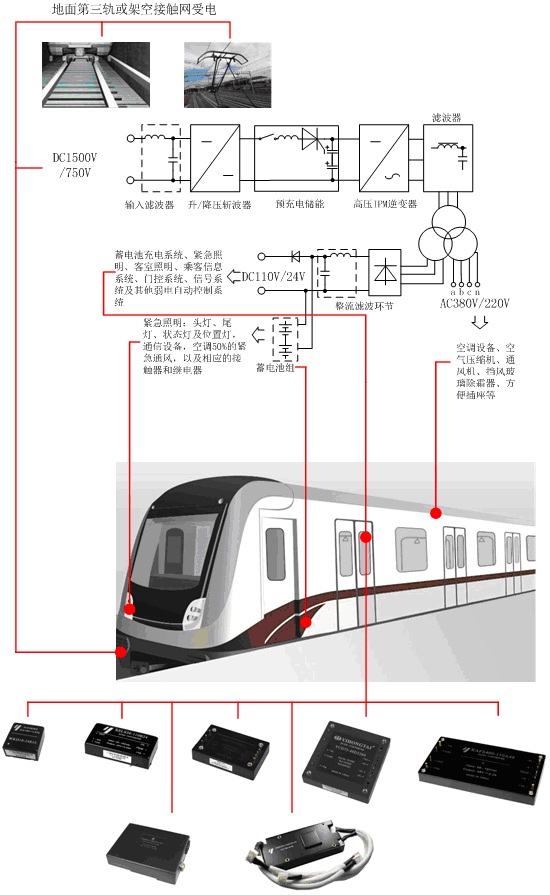The development of urban rail transit is an important part of urban public transport strategy. In twenty-first Century, China entered the stage of rapid development of urban rail transit. By the beginning of 2017, 25 cities in the country had opened subways and 39 cities were allowed to build subways. It is estimated that by 2020, the completion of the subway will reach 8133 kilometers.

The auxiliary power supply system of urban rail vehicle is the heart of the rail traffic control system. Its power supply quality and reliability will directly affect the safety of vehicle operation and the degree of passenger comfort. Urban rail transit train power is not very large, the power supply range is small, the power supply lines are in the urban construction group, so the supply voltage should not be too high to ensure safety. Considering the same voltage level, the DC system AC voltage loss is small (no reactance voltage drop), so the urban rail transit adopts DC power supply system. In the provisions of IEC and UIC, there are four kinds of DC voltage system and 25kV,, 50Hz, one kind of alternating current pressing, such as 600V, 750V, 1500V and 3000V. China's GB50157, GB3317-82 and other relevant standards in the provision of urban rail transit vehicle power supply system for DC750V, DC1500V two. At present, Beijing, Tianjin and other cities use the DC750V subway system, Shanghai, Guangzhou, Shenzhen, Nanjing and other cities using DC1500V system.
The auxiliary power supply modes of urban rail vehicles are distributed power supply and centralized power supply.
The decentralized power supply scheme is shown below (taking 6 car marshalling as an example):

The capacity of the single car auxiliary inverter is about 75 to 80kVA, and the power supply of the DC110V is about 25kW. Decentralized power supply redundancy, balanced axle load, configuration, but the cost of large, high total weight.
The centralized power supply diagram is as follows (taking 6 car marshalling as an example):

The static inverter capacity of each unit is about 250kVA, and the power supply of DC110V is about 25kW. Centralized power supply redundancy is small, each axle weight is difficult to agree, but relatively speaking, the total weight and low cost.
The different power supply modes of vehicles are inconsistent. In terms of redundancy and axle load balance, decentralized power supply is more common in Metro vehicles.
The auxiliary power supply system of urban rail vehicle has many kinds of inverter forms, and the typical block inversion principle is as follows:

City rail vehicle auxiliary power system is an important part of the control system, its main task is to meet the low voltage power supply, vehicle control for passenger lighting, air conditioning and ventilation unit, low-voltage electrical equipment required for various voltage and electric power. The power supply quality and reliability of the auxiliary power supply system will directly affect the safety of vehicle operation and the degree of passenger comfort.
Yihongtai company after many years of accumulated technology, established a rail power professional R & D team, launched the new "R" series of rail transit special power supply design to meet the relevant standards, "" electronic device GB/T 25119 rail vehicles, each field has been widely applied to vehicle weak automatic control, railway special module supply a variety of standard and custom size for customers.



